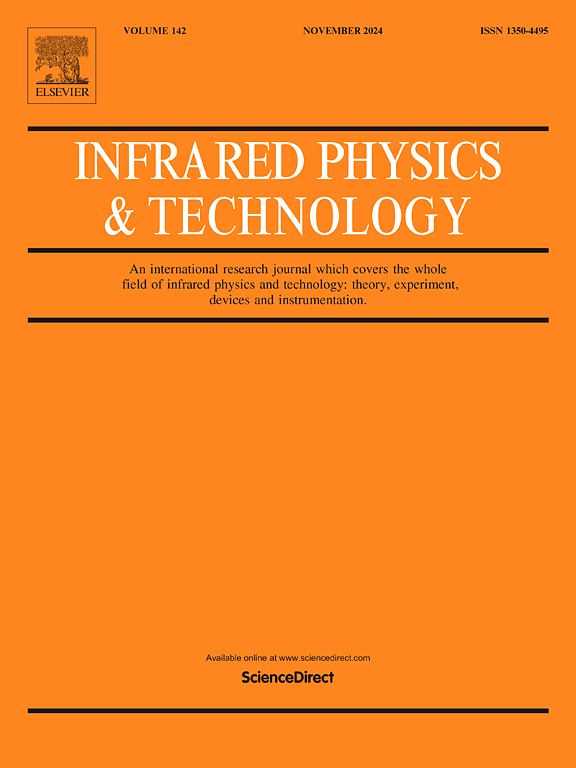可变速率真空热沉积制备高宽高比5 μm超小间距铟凸点阵列
IF 3.1
3区 物理与天体物理
Q2 INSTRUMENTS & INSTRUMENTATION
引用次数: 0
摘要
随着红外焦平面探测器像素间距缩小到5 μm,用于器件倒装互连的铟凸点的真空热蒸发工艺面临重大挑战。由于存在严重的堵塞问题,单纯控制衬底温度和沉积速率不足以实现高纵横比和均匀性的铟凸起。为了解决这一问题,本工作研究了不同沉积条件下制备的铟凸点的体积和轮廓的演变,并提出了一种动态沉积速率方法来最大化铟凸点的长径比生长速率。本研究成功制备了5 μm间距的凹凸铟阵列,经回流后,凹凸铟阵列的纵横比为0.92,凹凸铟阵列的纵横比为0.78。此外,采用球帽模型,研究并分析了凹凸下金属化(UBM)尺寸对采用动态沉积速率方法制备的高宽高比铟凹凸所产生的再流铟球高度的影响。对大阵列铟球在倒装互连后的变形进行了研究,最终实现了大于99%的互连率。这项工作为超小像素红外探测器的进一步发展奠定了基础。本文章由计算机程序翻译,如有差异,请以英文原文为准。
Fabrication of high-aspect-ratio 5 μm ultra-small pitch indium bump arrays by vacuum thermal deposition under variable rate
As the pixel pitch of infrared focal plane detectors is scaled down to 5 μm, the vacuum thermal evaporation process for fabricating indium bumps for device flip-chip interconnects faces significant challenges. Simple control of the substrate temperature and deposition rate is insufficient to achieve the high aspect ratio and uniformity indium bumps because of the serious clogging issues. To address this problem, this work investigates the evolution of the volume and profile of the indium bumps fabricated under different deposition conditions, and proposes a dynamic deposition rate approach to maximize the aspect ratio growth rate of the indium bumps. This research enables the successful fabrication of 5 μm pitch indium bump arrays with aspect ratio of 0.92 for 5 μm-pitch indium bumps and 0.78 for 5 μm-pitch indium balls after reflowing. Furthermore, the influence of the under-bump metallization (UBM) size on the height of the reflowed indium balls produced by the high-aspect-ratio indium bumps fabricated using the dynamic deposition rate approach is investigated and analyzed using a spherical cap model. The deformation of large-array indium balls after flip-chip interconnection process also have been investigated and finally achieved an interconnection ratio greater than 99 %. This work lays the groundwork for the further development of ultra-small pixel infrared detectors.
求助全文
通过发布文献求助,成功后即可免费获取论文全文。
去求助
来源期刊
CiteScore
5.70
自引率
12.10%
发文量
400
审稿时长
67 days
期刊介绍:
The Journal covers the entire field of infrared physics and technology: theory, experiment, application, devices and instrumentation. Infrared'' is defined as covering the near, mid and far infrared (terahertz) regions from 0.75um (750nm) to 1mm (300GHz.) Submissions in the 300GHz to 100GHz region may be accepted at the editors discretion if their content is relevant to shorter wavelengths. Submissions must be primarily concerned with and directly relevant to this spectral region.
Its core topics can be summarized as the generation, propagation and detection, of infrared radiation; the associated optics, materials and devices; and its use in all fields of science, industry, engineering and medicine.
Infrared techniques occur in many different fields, notably spectroscopy and interferometry; material characterization and processing; atmospheric physics, astronomy and space research. Scientific aspects include lasers, quantum optics, quantum electronics, image processing and semiconductor physics. Some important applications are medical diagnostics and treatment, industrial inspection and environmental monitoring.

 求助内容:
求助内容: 应助结果提醒方式:
应助结果提醒方式:


